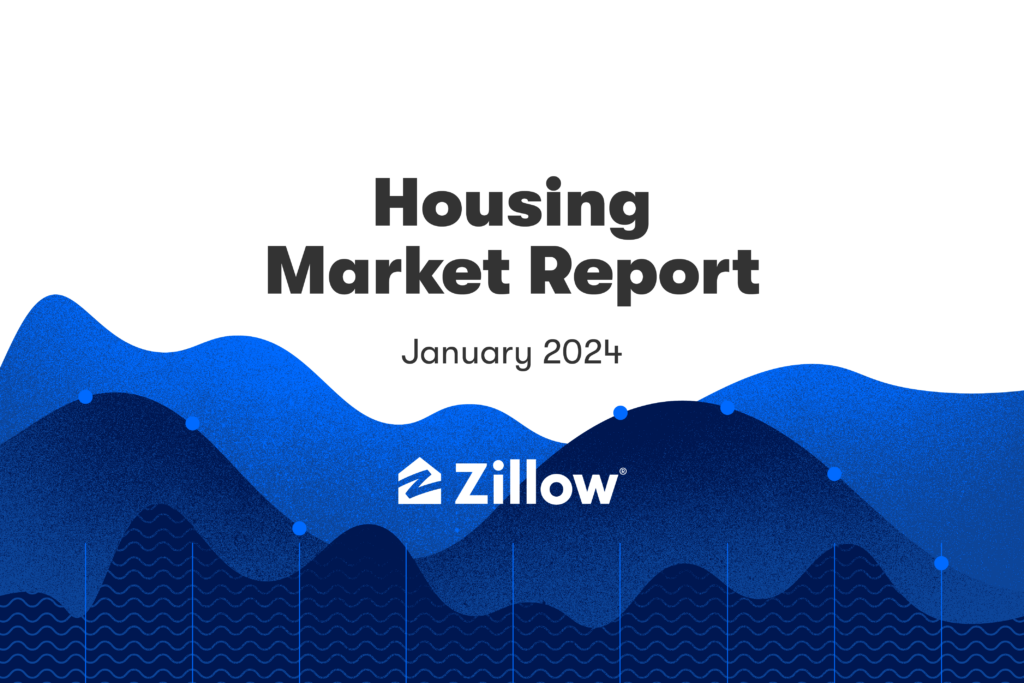Home shopping early may pay off as price cuts abound (January 2024 Market Report)
Expensive, coastal and Western markets are already heating up as spring season approaches
Buyers and sellers both should prepare for a competitive home shopping season come spring. Attractive, well-priced homes are being snapped up quickly, while many of those that have been lingering on the market are seeing their asking prices cut as sellers gauge market temperature.
Just over one in five houses on Zillow saw a price cut in January – that’s about equal to last year, but more common than in any of the five years prior. Those cuts are bringing seller expectations in line with the market conditions – without a lot of recent sales, evaluating a list price can be challenging.
Homes priced and marketed correctly are moving quickly in just 29 days, while other homes linger on the market for months, driving the typical age of all listings on Zillow up to 72 days.
Buyers have a few more choices available than last year. Total inventory is up more than 3% from a year ago, while the flow of new listings to the market is up nearly 6%. January typically sees a significant jump in new inventory over December, and this year that monthly boost was 43%.
Unfortunately – and in keeping with unimpressive Januaries the last few years – that was a relatively small bump up.
Home values
This month, the typical home in the US was $344,159. The typical monthly mortgage payment, assuming 20% down, was $1,760.
- Home values are up from year-ago levels in 47 of the 50 largest metro areas. Annual price gains are highest in Hartford (12.2%), San Diego (9.6%), Providence (8.3%), Boston (8%), and Los Angeles (7.4%).
- Home values are down from year-ago levels in 3 major metro areas. The drops were in New Orleans (-8.2%), Austin (-6.2%), and San Antonio (-3.2%). The least growth was in Jacksonville (0.4%) and Dallas (0.5%).
- Home values climbed month-over-month in 4 of the 50 largest metro areas in January. Gains were biggest in Riverside (0.2%), San Diego (0.1%), New York (0.1%), Las Vegas (0.1%), and Miami (0%).
- Home values fell, on a monthly basis, in 45 major metro areas. The largest monthly drops were in New Orleans (-1.1%), Minneapolis (-0.8%), Buffalo (-0.7%), Cleveland (-0.7%), and Pittsburgh (-0.6%).
- The typical mortgage payment is up 7.2% from last year and has increased by 103.1% since pre-pandemic.
New listings
- New listings increased by 43.5% month-over-month in January. But even that massive jump up is relatively small compared to pre-pandemic January norms; new listings rose 66% monthly in 2019 and 63.4% in 2020.
- New listings are up by 5.8% compared to last year.
- New listings are -24.9% lower than pre-pandemic levels. The pandemic-era shortfall in new listings has lessened compared to the 35% deficit in April, but gains made late last year have been lost.
- Metros where sellers are showing up much stronger than last year are San Diego, where new listings are up 27.7% annually, Miami (21.9%) and Riverside (20.1%).
Total Inventory
- Inventory (the number of listings active at any time during the month) in January increased by 1.5% from last month.
- There were 3.2% more listings active in January compared to last year.
- Inventory levels are -37.3% lower than pre-pandemic levels for the month, a slightly deeper hole than in December (-35.8%).
- Inventory fell year over year in 30 of 50 major markets, and declined the most in Las Vegas (-29.3%), Seattle (-22.3%), and Washington, D.C. (-21.8%).
Competition
- Attractive listings are moving quickly – listings that sold in January did so in 29 days. That’s slower than during the rush for real estate while mortgage rates were low, but 19 days faster than pre-pandemic norms.
- However, mispriced or poorly prepared listings are lingering on the market. Sellers are turning to price cuts to try to meet buyers where they’re at. The share of listings with a price cut is relatively high at 20.9% – cuts are down slightly from last year but are more common than any of the five years prior to that.
- 26.4% of homes sold above their list price in December. That’s up 2.5 ppts compared to last year, and up 8 ppts compared to pre-pandemic averages.
- The share of homes that sold over list price rose in 36 of the 50 largest US metros. Markets with the highest annual growth were San Jose (33.8%), San Francisco (14.3%), and Los Angeles (14.3%).
Newly Pending Sales
- Newly pending listings increased by 25.5% in January from the prior month.
- Newly pending listings decreased by 3.8% from last year.
[
Rent
- The typical U.S. rent is $1,958. Annual rent growth continued to stay stable at 3.4%, virtually unchanged since August.
- Annual rent growth is strongest in metros across the Northeast, Great Lakes, and Midwest regions. The top-three are Providence (7.7%), Cincinnati (7.1%), and Hartford (7.0%) – the same leaders seen in December.
Read more about the rental market in Zillow’s January Rental Market Report.
[

